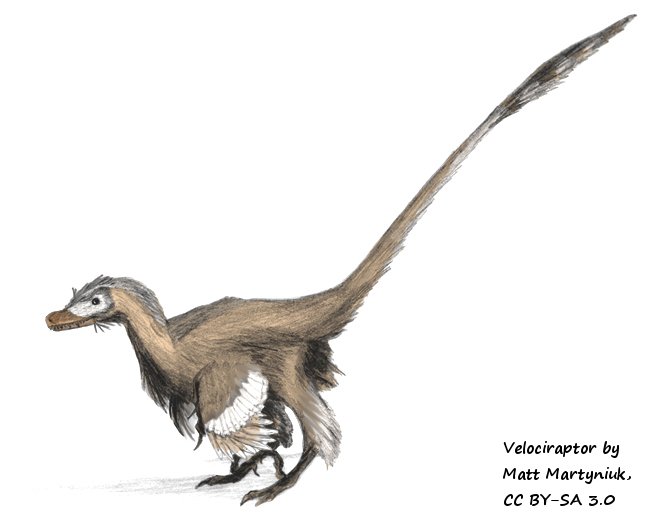Welcome back to I Heart Dinosaurs, where we embark on a thrilling journey into the captivating world of Dromaeosaurid dinosaurs. These remarkable creatures, commonly known as “Raptors,” were once fearsome predators that roamed the Earth during the Mesozoic Era.
Dromaeosauridae is a diverse group of dinosaurs that lived 168–66 million years ago, primarily during the Cretaceous Period, depending on the species. They were known for their bird-like features, such as feathers, hollow bones, and a wishbone. In fact, it’s likely that early raptors, like the Mikroraptor, who lived 120 million years ago, were able to fly or at least glide.
While most of these dinosaurs were relatively small to medium-sized compared to other dinosaurs, they held a position of dominance in their era. Nevertheless, there were also larger members within this family, which we will explore shortly.
They had a claw on each foot and were carnivores with sharp and curved teeth, perfect for catching prey. Raptors did not hesitate to attack larger prey, as fossil remains of animals fallen victim to raptors suggest. Examples are a fossil of a pterosaur that still had a raptor tooth in its leg and the fossil remains of a Velociraptor fighting with a Protoceratops.
All types of Dromaeosaurs had three fingers with sickle-shaped claws on each foot. They could run fast chasing after prey or running from bigger predators.
Some well-studied types of raptors are:
Velociraptor
One cannot delve into the world of Dromaeosaurids without mentioning the iconic Velociraptor. With its fearsome reputation largely attributed to the Jurassic Park franchise, Velociraptor was a relatively small dinosaur that inhabited the ancient landscapes of Mongolia and China during the Late Cretaceous period. Characterized by its distinctive sickle-shaped retractable claws on the second toe, Velociraptor was a highly agile predator and spent its day preying on smaller dinosaurs and other creatures.
Deinonychus
Next in our journey is Deinonychus, a species whose name translates to “terrible claw.” Deinonychus thrived during the Early Cretaceous period in what is now North America. These larger Dromaeosaurids possessed sharp, curved claws on their feet and long, grasping arms. With an estimated length of around 11 feet (3.4 meters), Deinonychus was a formidable predator, known for its pack-hunting strategies, intelligence, and cooperation.
Utahraptor
Utahraptor, meaning “Utah’s predator,” was one of the largest members of the Dromaeosaurid family. Flourishing in the Early Cretaceous of North America, Utahraptor boasted an estimated length of approximately 20 feet (6 meters) and displayed similar traits to its smaller relatives, including the infamous sickle-shaped claws. Its size and strength enabled Utahraptor to tackle larger prey, possibly including herbivorous dinosaurs like sauropods.
Microraptor
Intriguingly, not all Dromaeosaurids were imposing giants. Microraptor, meaning “tiny robber,” provides us with an exceptional example of a smaller member of this family. Fossils of Microraptor have been discovered in China, showcasing its striking feathered wings and long tail, which likely aided in aerodynamic gliding. These unique adaptations suggest that Microraptor was a capable flyer. It was 2.5 feet long, or 77 centimeters.
Buitreraptor
To conclude our list, we introduce Buitreraptor, a Dromaeosaurid found in the Late Cretaceous deposits of Argentina. This dinosaur was named after the Buitrera fossil site in Patagonia, where the remarkably preserved remains were unearthed. Buitreraptor stood about 3.3 feet (1 meter) tall and featured long, slender legs and sharp claws.
Its discovery provided valuable insights into the geographic distribution of Dromaeosaurids during the Late Cretaceous period.
Thank you for joining us on this exciting exploration of the incredible world of Dromaeosaurid dinosaurs! We hope you enjoyed delving into the lives of these ferocious predators, commonly known as “Raptors,” who once roamed the Earth. Remember to subscribe to I Heart Dinosaurs, to stay updated on more captivating content about prehistoric creatures. Let us know in the comments below which dinosaur you’d like us to cover next or any other topics you’d like us to explore. Until next time, keep your curiosity alive and continue to marvel at the wonders of the ancient world. Happy dinosaur discoveries, and we’ll see you in the next episode!

